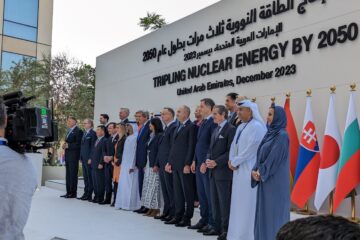Falling electricity demand and the impact on nuclear projects
During the summer I have been a slacker when it comes to contributing to my blog. It is a time for relaxation; a good time for reading and reflection.
As we all start the big climb out of the current economic crisis, it may be time to start thinking about what lies ahead and the legacy that this crisis will have left us. There has been an assessment by the IEA in May about the impact of the financial crisis on energy in general and a more detailed assessment of nuclear power in the USA by Moody’s in June. So why am I thinking of talking about this now in August?
Well, this week OPG (Ontario Power Generation) announced their second quarter results here in Ontario Canada (home for me). They reported a 19% drop in electricity production for the second quarter. In part this is due to lower overall demand and also is related to production by others in the market. Now there are a number of reasons for this lower demand. First and foremost, this has been a mild summer so the air conditioning loads are down. Second the economy has had a big effect on industrial loads and finally, the success of the OPA conservation programs is starting to show benefits in the market.
This summer has seen some unusual things happen in the Ontario market. Nuclear plants have had to be shut down due to the lack of load. This is a result of low off peak demand and an increasing amount of renewables on the system that displace base load when the resource is available according to electricity market rules. Also this summer, the government of Ontario suspended its bidding process for a new build nuclear plant. The reasons given were the high cost of the bid and the uncertainty over the future of AECL, the lead bidder. AECL’s shareholder; the Government of Canada, is looking to partially privatize the national nuclear vendor. I would guess that the lower demand probably also had an impact. Hard to think about spending large amounts of capital when demand is shrinking.
In any case, reading about OPG made me think so I have had a look at the numbers. Demand has decreased in Ontario since 2005. Current projections by the IESO are for a 4% drop in demand this year and a further 0.35 drop next year. Wow! A far cry from even the modest 1% or so growth assumed in the current Integrated Power System Plan. This is consistent with the IEA forecasts. They are expecting a drop of 3.5% in 2009; the first drop in global electricity demand since the second world war!
The Moody’s report is more focused and suggests that US utilities that are considering new nuclear plants are not doing what is necessary to strengthen their balance sheets to get ready for these large projects. Moody’s claims that the size of these projects makes them “bet the farm” projects – a term I often use when teaching project structuring for the World Nuclear University. However, they also note on the positive side that there is a demand for new low carbon generation and that nuclear as an economic alternative can play a role.
So what does this mean for the future of nuclear in North America? The IEA is somewhat negative and states that the crisis may hold back some programs. It mentions South Africa as an example of one country that has delayed its new build projects for financial reasons. On the other hand, it also states that nuclear is probably the only large scale viable low carbon generation option and that its economics improve as carbon is priced. They also note that most programs that are in the advanced planning stages are continuing and once operating nuclear plants are viewed favourably by the financial community.
To answer the question – the current economic climate may delay some new nuclear projects, however it is expected that most will continue and that they will be able to raise the necessary financing as the economy starts to improve. Most likely, investor-owned utilities in North America will look to strategic partnerships to share costs and risks. The lower demand may also buy the industry some time to ensure that it plans and executes new projects with the necessary diligence and oversight to ensure project success. Given the relatively high capital costs and long project schedules of a nuclear plant, projects currently in the preparation phase will be in service towards the end of the decade. And of course, continued focus on implementing new projects on budget and on schedule will be key to a successful future.




